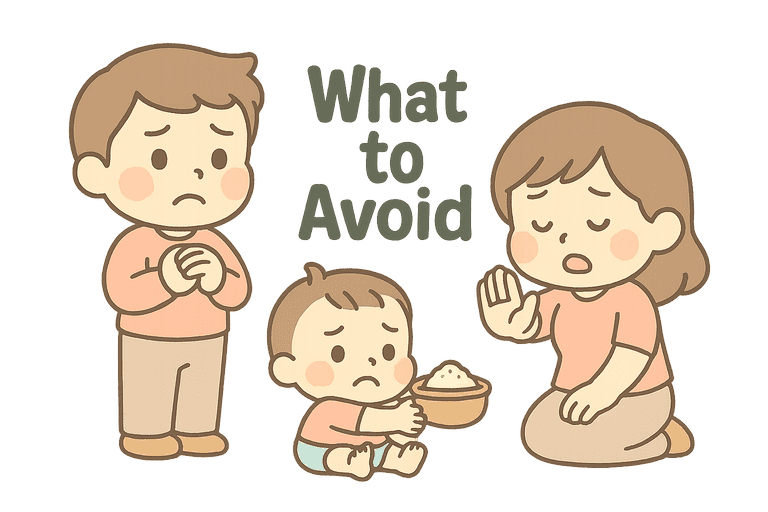
All about hydration and water
Daily Fluid Requirements for Infants and Young Children
| Infant age category | Average daily fluid needs | Additional notes or source |
|---|---|---|
| 0–6 months | 700 | Breastmilk or formula suffices |
| 6–12 months | 800 | Includes small water amounts |
| 1–3 years | 1300 | 50% from fluids, 50% from solids |
| 4–8 years | 1700 | WHO recommendation |
Quick Answer

Hydration is crucial for infants’ health, supporting digestion, temperature regulation, and cellular function.
For babies under six months, breastmilk or formula provides all the fluids they need—additional water is generally unnecessary.
Once solids are introduced (around six months), small amounts of water can be offered alongside meals to support hydration.
Monitor for signs of dehydration and adjust fluid intake during hot weather or illness.
Recommended Practices

Breastmilk or Formula as Primary Fluid
Ensure newborns and infants up to 6 months receive breastmilk or iron-fortified formula on demand—approximately 8–12 feeds per 24 hours—since these provide balanced hydration and nutrients.
Introduce Small Sips of Water from 6 Months
Offer 2–3 tablespoons of cooled, boiled water in a cup after feeding solids, 1–2 times per day initially, gradually increasing to 4–6 ounces (120–180 ml) by 12 months.
Use a Cup, Not a Bottle
Encourage drinking from a small, open-top or straw cup to develop oral motor skills; avoid water-filled bottles which can increase choking risk and dental caries.
Adjust Intake for Weather
Increase fluid offerings by 20–30% during hot summer months or in high humidity; in monsoon, maintain regular hydration; in winter, monitor indoor heating and ensure adequate fluid intake.
Hydration During Illness
Provide extra breastmilk, formula, or oral rehydration solution (ORS) at the first signs of vomiting or diarrhea—5 ml every 2–3 minutes for mild dehydration—and follow WHO guidelines for ORS preparation.
Monitor Urine Output and Weight
Track urine frequency (at least 6 wet diapers per day for infants) and regular weight checks—any sudden drop (>10% of birth weight in newborns) warrants closer hydration assessment.
What to Avoid

Giving Plain Water Before 6 Months
Water can fill the baby’s stomach without nutrients, risking electrolyte imbalance and reduced breastmilk intake.
Excessive Water Intake
Overhydration can dilute electrolyte levels, leading to hyponatremia—never exceed recommended volumes.
Sugary or Flavored Drinks
Juices or sweetened drinks can cause diarrhea and tooth decay; stick to water, breastmilk, or formula.
Using Bottles for Water
Prolonged bottle use with water can promote ear infections, dental caries, and poor cup-drinking skills.
Cold Water in Winter
Cold fluids may cause discomfort or gastrointestinal upset in infants; offer water at room temperature.
Unfiltered or Contaminated Water
Always boil and cool water to kill pathogens—avoid giving tap water without proper sterilization.
Common Scenarios and Solutions


Infant fussiness during a heat wave
Offer breastmilk or formula more frequently (every 2–3 hours) and provide 1–2 tablespoons of cooled, boiled water in a cup between feeds.
Baby refusing feeds and showing signs of heat stress
Move to a cooler area, undress extra layers, give small sips of ORS solution, and consult a pediatrician if refusal persists.
Mild diarrhea after immunization
Continue regular breastmilk or formula, introduce ORS (5 ml every 2–3 minutes), and monitor for improvement within 4–6 hours.
Infant sleeping long stretches and missing feeds
Gently wake for feeds every 3–4 hours, especially in the first month, to ensure adequate hydration and weight gain.
Similar Questions Parents Ask


Can I add water to formula?
No—formula must be prepared exactly per instructions to maintain nutrient balance; diluting with extra water reduces caloric and nutrient density.
How do I know if my baby is thirsty?
Look for cues like lip licking, restlessness, fussiness, or reaching for the cup; infants can’t verbalize thirst.
What temperature is best for infant water?
Room temperature (around 25–30°C) is ideal to prevent GI upset or discomfort.
Can overhydration harm my baby?
Yes—excess water can lead to electrolyte dilution (hyponatremia), causing lethargy, seizures, or worse.
Signs to Consult Immediately


Sunken eyes or fontanelle
Very few wet diapers (<3 in 24 hours)
Lethargy or extreme irritability
High fever with refusal to drink
Blood in stool or vomit
Detailed Explanation


Water makes up a large proportion of an infant’s body weight (about 75% at birth) and is vital for cellular processes, digestion, nutrient transport, and temperature regulation.
Adequate fluid balance keeps electrolytes in harmony and supports organ function.
Fluid needs vary by age: newborns (0–3 months) depend solely on breastmilk or formula for all hydration.
Between 3–6 months, these remain primary, with no additional water required.
After 6 months, small sips of water supplement solids but breastmilk/formula continues to provide most fluids.
Warning signs of dehydration include sunken fontanelle (soft spot), dry mouth and lips, reduced tear production, fewer wet diapers, lethargy, and irritability.
Early detection allows prompt intervention with extra feeds or ORS.
Age-based guidance: 0–3 months—exclusive breastfeeding/formula feeding on demand.
3–6 months—maintain feeding frequency (6–8 feeds/day).
6–12 months—offer 4–6 ounces of water in a cup alongside 3 meals of solids and continued breastmilk/formula (4–5 feeds/day).
Premature or low-birth-weight infants may have higher fluid requirements and immature kidneys; they need closer monitoring of weight, urine output, and, in some cases, specialized neonatal care to manage hydration safely.
Seasonal adaptations: Summer—offer additional feeds and water to offset sweat losses.
Monsoon—maintain routine but be vigilant for infections that cause diarrhea.
Winter—monitor indoor heating and dryness; ensure water remains at room temperature to avoid chilling.
Sources
International Sources
“Breastmilk is the ideal source of hydration for infants up to six months.”
Comprehensive guide on feeding, hydration, and developmental milestones.